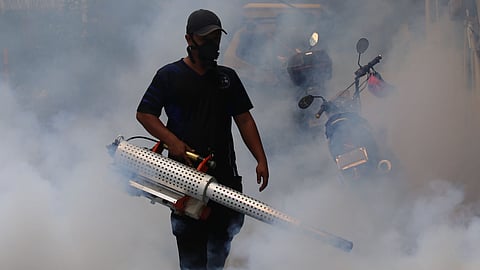
- NEWS
- the EDIT
- COMMENTARY
- BUSINESS
- LIFE
- SHOW
- ACTION
- GLOBAL GOALS
- SNAPS
- DYARYO TIRADA
- MORE

Despite the Department of Health (DOH) 's announcement that the number of dengue cases in Metro Manila reached a critical level, the number of Dengue cases in Caloocan and Malabon hospitals remains low.
In Caloocan, they observed a recent increase of at least 35.3% compared to last year’s record of 1,755 cases.
Since the start of the year until 26 October, the city logged a total case of 2,374 dengue cases.
Additionally, they’re recording an average of 30 to 50 dengue cases per week in the hospitals in the whole city.
According to Maureen Villanueva, the surveillance officer of the City Epidemiology and Surveillance Unit of Caloocan City, she said that most admitted patients are children, teenagers, and senior citizens.
Villanueva also added that most patients stay for at least five to seven days in the hospitals until their complete recovery.
The activation of fast lanes in the health centers and hospitals in Caloocan helps in the quick identification of a dengue patient.
“Through dengue fast lanes, once a patient has a fever, we immediately suspect that a patient has a dengue so that the patient can receive immediate treatment.”
"In preparation for a possible increase in cases, we trained and reviewed the workers on how to create a homemade "oresol" to help health centers prevent congestion in our city hospitals," said Dr. Christine Paden, the Health Education and Promotion Officer of Caloocan City.
A homemade oresol, also known as the oral rehydration solution (ORS) can easily alleviate dehydration in its early stage. It can be made by combining a liter of water, eight teaspoons of sugar, and a teaspoon of salt.
For Dr. Paden, the homemade oral rehydration solution helps the dengue victims because they can be immediately rehydrated even if the patients are still in their homes.
Additionally, they are partnering with the local barangays to conduct fogging, and clean-up drives to remove materials wherein dengue-carrying mosquitos could breed.
In Malabon, which was recently affected by flooding caused by Typhoon "Kristine," the dengue cases also remain low.
The Malabon City Health Department said that the growth rate in the past week decreased by 42.6%, while the cases last year lessened by 24%.
“We are doing continuous surveillance for dengue and to keep the cases down, we are improving dengue awareness through social media, community lectures, and fogging,” the Malabon City Health Department said in a message.
The DOH reported an increase of 34.47% in dengue cases in Metro Manila, with the Quezon City recording the highest number of cases at 6,208.
They also added that four local government units (LGUs) are currently under an “epidemic threshold” for dengue.
